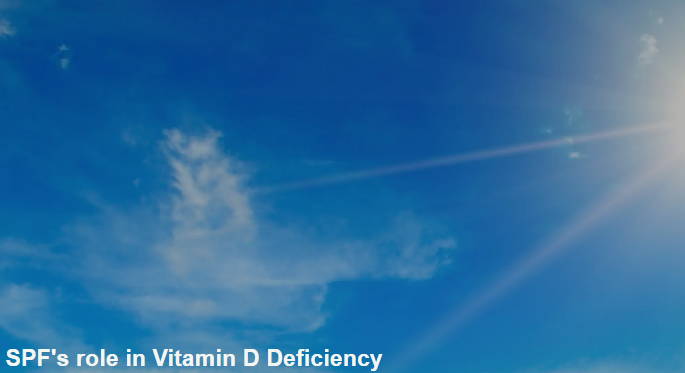What's the problem with SPFs?
BANNED!
The Organisation of Consumers in Spain has ordered the withdrawal of many big brand sun creams from the market with immediate effect, including those pictured.
But why?

It seems like there is a problem with SPFs.
This is from Google:
"Sunscreens contain ingredients like oxybenzone, octinoxate, and avobenzone that absorb into the skin and act like sponges to absorb UV radiation. The UV radiation is then converted into a small amount of heat and released from the body. Some chemical sunscreens can absorb UVB rays, which are known to cause sunburn."
So, sun screens work by having oxybenzone, octinoxate and avobenzone absorbed into the skin to make the skin reflect UV light or convert the light energy into heat.
Sounds clever...
But there is a problem. A Big problem.
Non of these ingredients are safe for consumption, yet are licensed as safe for absorption by the skin.
Significant irritation is reported by those with sensitive skin types, such as those with rosacea or eczema after using SPFs.
Over the next 60 minutes, these chemicals enter your body's bloodstream and are distributed around the body, eventually arriving at your Liver.
"two things you should never put on your skin"
Dr-Janie-Bworing talks about skincare
"these chemicals are highly absorbable and enter the bloodstream "
Andreas Moritz, Medical Intuitive & Author talk about how 'The Sun Doesn't Cause Skin Cancer, But Sunscreen Does!'
Ingredients to Avoid
Oxybenzone has been linked to hormone disruption, reproductive and developmental issues and skin irritation. Several studies have suggested that oxybenzone can mimic estrogen in the body, leading to hormonal imbalances and potential health problems. In one study, researchers found that oxybenzone was present in the urine of nearly every participant, suggesting widespread exposure to this chemical.
Octinoxate has been shown to disrupt hormones and may cause allergic reactions and skin irritation. In one study, researchers found that octinoxate was present in the breast milk of nursing mothers, suggesting that this chemical can be absorbed and passed on to infants. It is said to accumulate in fatty tissues rather than being fully expelled.
Retinyl palmitate there is concern that this increases the risk of skin damage and cancer because it breaks down in sunlight and produces free radicals that damage skin cells. In one study, researchers found that mice exposed to a combination of retinyl palmitate and UV radiation had a higher incidence of skin tumors than mice exposed to UV radiation alone.
Homosalate has been shown to disrupt hormones and may cause skin irritation. In one study, researchers found that it accumulates in breast milk and can be passed on to nursing infants and has also been detected in human urine and blood.
Octocrylene has been found to cause skin allergies and may be a potential endocrine disruptor. It can break down in sunlight and produce free radicals that damage skin cells.
Titanium and zinc dioxides stop the absorption of Vitamin D; which is so important for wellbeing that, immune system check-ups count the Vitamin D level as the measure of resistance to infection.
Tests show that the ingredients in commercial sunscreens increase the skin cancer risk and induce premature ageing.
Skin cancers are rising
Cases of skin cancer are rising DESPITE the huge increase in the use of sunscreens; with the global market currently worth over $11 billion per year.
Cancer shock:
How SPF and UVA work together against you
UVA light penetrates through clouds, glass, water, clothing and by-passes most SPFs which are designed to stop sun burn (coming from UVB light).
UVA is the primary cause of premature ageing and is also responsible for many types of cancer development.
Its the UVA photons that get absorbed by free radicals to induce oxidative stress in the new-forming cells causing them to mutate (cancer)
There are real concerns that SPF ingredient Retinyl palmitate increases the risk of skin damage and cancer because it breaks down in sunlight and produces free radicals that are energised by UVA photons to triggers damage to skin cells.
SPFs in summary
Contain alarming chemical ingredients
Do not block damaging UVA light
Fasilitate cell mutation by providing additional free radicals for the UVA to energise
SPF users wash off the cream along with any Vitamin D that was formed on the skin's surface - further endangering themselves.

How Can I Protect Myself from Sun Damage?
Around 90% of the UV light outside is UVA. We need protection in our skin because UVA is so penetrating.
UVA photons activate free radicals to cause oxidative stress in skin cells, but certain oils can stop this deep within our skin.
Our products are formulated to envelop the vulnerable cells with these oils to protect them from damage and mutation from oxidative stress.
We need the sun and the vitamin D it produces in our skin, but we need protection from free-radicals damaging our vulnerable skin cells.
Start today
Using our products below ...
Collagen is better protected
Pigmentation damage is reduced
Anti-Cancer ...
Vulnerable new skin cells form without risk of free radical mutation
Sun-forming Vitamin D production is not hindered
How to use these Body Oils:
The key to using the pre sun Body oil is to make sure that you don’t let the skin burn in the first few days, so for the first 2-3 days of your holiday or in the early part of spring, apply the Body oil regularly onto skin and only stay in the sun for short spells.
If you’re in the sea or the pool, apply the oil after you’ve washed off the chlorine or the salt
Your skin will tell you when it’s had enough sun with a slight tingle or redness. Get some shade or cover up.
Once you’re past the first 2-3 days you will find that the skin starts to take on a healthy glow which you can then build on with regular use of the body oil.
If you’re out and about sightseeing or shopping then applying the NES106 Body Lotion over the top of the pre sun Oil works really well to lock in the oil and leave a matt finish)
If after all of the above, you really can’t bear to be parted from your SPF, put our Oil on first and then apply your SPF product over the top.
However, if you're careful and get plenty of shade and let your melanin come through you will find that you will come away from your holiday with a great tan, no burn and that skin cancer causing UVA, neutralised.


